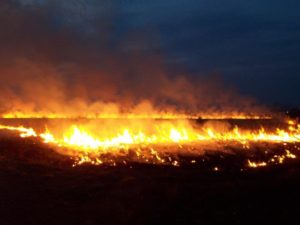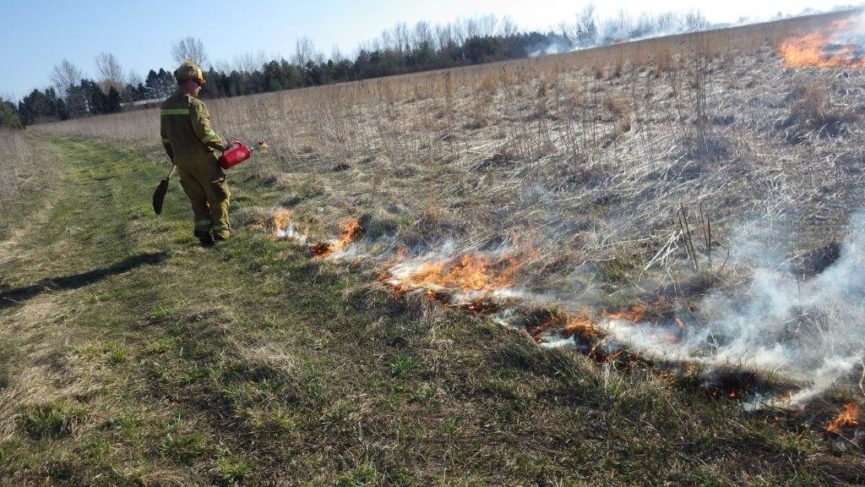
By: Tom Lounsbury.
Fire is no doubt a living creature of sorts which requires oxygen and fuel to survive. Primitive humans were able to ascend to the top of the food chain primarily due to being able to create and use fire in a constructive manner. There is no question they knew it could easily become a raging beast in its own near mystical might, whenever fire went out of control. Fire would ease humans out of the stone-age, through the various ages of metallurgy and even industry (steam and you name it) which remains an ongoing and advancing process still today.
An example in history can relate to the knights in shining armor who couldn’t have done their heroic deeds if it hadn’t been for the individuals behind the scenes who knew how to handle fire and a forge to create everything the knights required (one of my favorite TV shows is “Forged in Fire” on the History Channel).
Certain survival situations even during our modern times require knowing how to properly make a fire, which can be quite critical per life and death. I always carry the means to create fire whenever I’m in the outdoors, and I’ve been in wilderness situations where it is a prime necessity. I will always remember the time when I was bowhunting for caribou in the Arctic and my hunting companion was showing signs of hypothermia while we waited for our Inuit guides coming by canoe on an ocean fiord to locate and pick us up, and darkness had settled in.
There was plenty of driftwood brought in by the tides in this region which is devoid of trees, but driftwood by itself isn’t usually easy to get a fire started with. Fortunately the Inuits (aka Eskimos) had shown me a shrub (which reminded me of sagebrush) that when properly ignited, will turn into a sudden and hot blaze and get the driftwood to burn. The large fire I quickly created thawed out my hunting companion and allowed the Inuit guides to spot us on the isolated bluff.
From the beginning of time, Mother Nature has used fire to literally cleanse certain matters such as aging forests and grassland prairies and to start new and revived plant life. This was usually done by lightning strikes and it is no doubt the manner in which primitive humans were first introduced to fire, which would lead to them learning how to tame and train the “beast” and eventually create it.
A prime example of Mother Nature using the beast to straighten matters out is Yellowstone Park which entails 80% forestland with the predominate tree species being lodgepole pine (which gets its name from being the preferred poles for Indian teepees). Since its inception as a National Park, the forests in Yellowstone were continually protected from fire until the late 1960’s (remember all those “Smokey the Bear” commercials of the day), when it was realized that fire, when controlled, was actually beneficial as it removed dead debris, brush and opened the understory. The lodgepole pine also required fire in order to propagate because intense heat from fire was required to open the pinecones and release the seed.
By 1988, Yellowstone Park’s lodgepole pine trees were 250 years old, and with a 300 year lifespan, they were near their limit. Several small fires had started in July and were being monitored. However 1988 was a dry summer that year, featuring a long drought, and winds from “dry storms” (thunderstorms with plenty of lightning but no rain or moisture of any sort). One nasty fire was started in a nearby National Forest when a timber-cutter dropped a cigarette and winds eventually created a firestorm, which is the “beast” with its own attitude that even creates its own winds and atmosphere (this is what happened in the Thumb with the Great Fire of 1881). Many of the smaller fires linked up due to high winds and more firestorms resulted. At its peak, more than 9000 firefighters were on hand to battle the fire which was the largest in Yellowstone Park’s history to date, and 36% of the park was burned. The fires wouldn’t go completely out until cooling autumn rains arrived. Mother Nature has her way at times.
Park officials received a lot of media criticism over the fire and media coverage during the fire were sometimes inaccurate (gloom, doom and hysteria makes for great news, whether or not it is accurate). The reality was that all the conditions for a fire of this nature were ready and waiting in Yellowstone Park, and it wasn’t a matter of if, but when, and the summer of 1988 was the time.
My cousin John Lounsbury was the Lake District Ranger in Yellowstone Park at that time, and he invited me out to join him in September 1989 for a patrol using horses to reach our backcountry destination, the Thorofare Ranger Station, which is 40 miles from the nearest road. To say I was in Heaven in this wilderness environment is an understatement, and I was given a firsthand opportunity to view the fire’s end result from the year before. Unlike what certain media reports implied, the Parkland was far from being a blackened “moonscape” (I took plenty of photos to prove that fact).
Certainly there were areas that were scorched pretty good (my new leather chaps quickly took on an antiqued sooty look), but in the ashes a year after the big fire, I could see new life already sprouting up with a multitude of lodgepole pine seedlings everywhere. I also saw some skeletons where elk here and there were trapped and succumbed to the flames, but it wasn’t anywhere near the graveyard full of skeletons reported by some media who I’m sure didn’t have the wherewithal to even venture into the extremely isolated wilderness areas to verify matters (obviously most of the wildlife knew how and where to skedaddle). Some of the fires actually had been “ground fires”, and trees were left alive and standing with only the understory removed.
I would again accompany my cousin John on a similar trip six years later in the fall of 1995, and a real eye opener it turned out to be. Some previous critics had said Yellowstone’s scorched soil would be left infertile from the intense heat, and that couldn’t have been further from the truth. What I saw was a forest reawakened with new life, and the little sprouts I had seen poking out of the ashes six years before had become young trees with a lengthy future. Certainly there was still a charred, dead tree poking out here and there, but only a faint reminder of the big 1988 fire that would soon completely disappear.
Burning grassland has always been a method to improve matters, because fire removes old thatch, eliminates certain weeds, as well as it warms the soil to give matters an extra jumpstart, and the ashes also leave behind beneficial nutrients. With this in mind some years back, I decided to burn my horse pasture to improve the grazing (Native Americans often did this in the Great Plains to attract buffalo herds to plusher prairie grasses near their villages).
The pasture was very dry and there was no wind at all when I lit the match, and everything was going as planned until the “beast” decided to wake up, thanks to an unexpected strong breeze out of the wrong direction. I had a shovel along to beat out any errant flames and the beast and I were suddenly doing battle with me swinging away like a maddened Berserker. I eventually won out, but not before I was missing one eyebrow and half a moustache. I decided right then and there that playing with fire wasn’t my cup of tea.
That is why I hire Don Schank of Michigan Firepros, LLC (1-810-656-6622) out of Clifford, whenever my CRP prairie grass fields need burning to beef up and improve habitat (burning is usually performed in early spring, as soon as winter snows are gone). I admit I was a tad nervous the first time, but Schank is a true “beast-master” and works with a skilled crew (it’s not a one-man job, trust me, folks). Two teams going in opposite directions start a back burn, with each team being suppoerted by a person on an ATV equipped with a water tank and pressure hose to keep the fire in check and going the right direction. Eventually the two teams meet with the wind directly behind them, and a full ring of fire has been formed, all of it heading to join the rest of the flames at the center, and the fire portion with a tailwind develops a real attitude.
When the ring of fire comes together, the beast really rears up toward the sky in swirling ultraviolet flames similar to a miniature tornado. Then suddenly, poof, the beast is dead, because all the fuel has been consumed. What is left is a solid black, apparently lifeless field, but that will soon change with the color of green grass poking up through the charred blackness. Then there will be a profusion of prairie wildflowers everywhere and they will dominate the landscape until the prairie grasses gain steam and pass them by with renewed vigor.
Taming the beast and keeping it under control is truly a beneficial conservation tool I depend upon to maintain proper prairie grass habitat, the way Mother Nature intended.
- Fickle weather during December deer hunting adventures - December 3, 2025
- Michigan’s most popular opening day – November 15th - November 23, 2025
- A missing dog found while anticipating opening day - November 23, 2025

